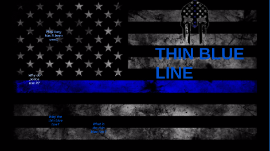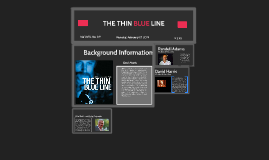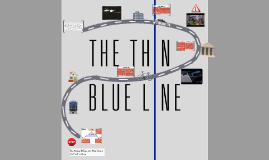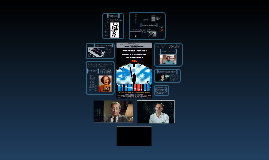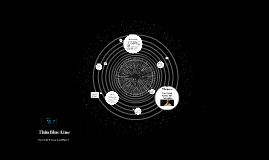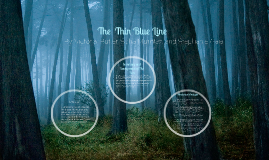Thin Blue Line
Transcript: The third and final part of this documentary reveals the recorded confession of David Harris. Morris just shows a simple image of a cassette player, playing the voice of Harris. While being interviewed, he cues in on the fact that he was in fact there and because of that if Adams claims he's innocent, then he is. The camera changes angles of the cassette player, focusing not only on the voices but the visual. Although Morris did lose the footage of the actual interview, the showing of just the cassette player creates an eerie and dramatic effect along with the subtitles, signifying the convict's words. As the middle of the documentary nears, the audience starts to envision more of the story with the multiple reenactments involved. For example, the reenactment of the shooting gives an input on how the night potentially went. Other significant visuals that appeared were close-ups of the pack of cigarettes and the swinging watch. The cigarettes symbolized the time era; most men of that time smoked so it represented the common-ness of smoking. Someone as normal as everyone else could have killed someone. Along with that period of time, Morris included footage of drive-in theaters and films relinquishing the time period. He set the setting correctly. As for the swinging watch, that represents the time passing. When it swung fast, time went by faster and vice versa. Another key visual was the milkshake being dropped. This was significantly shown in the documentary because later, it challenges the officer's story landing in a different position than where he said it did. He also included various interviews, all with different backgrounds and stories showing variation including those of the false witnesses and uses painted pictures from the courtroom conveying the image of the trial while also explaining it via interviews. Last, for a great chunk of time, the music stops signifying that the voices and what they saying was more vital than the dramatic effect. The audience is who the speaker is trying to reach out to, basically people of authority that find Randall Adams guilty. He's trying to persuade to the audience that things aren't always what they seem. Look beyond what is presented to you. Morris portrays a sense of ethics when he puts in the interviews of the convicts because he uses their actual words and stories. By using their words, the viewers are able to see for themselves the convicts' perspectives of how things really went down that night. Also, Morris displays clippings of newspaper headlines from that night displaying credibility from new sources. These facts convey a sense of logos. The music also creates the mood, serving as a pathos effect by connecting to the viewers' emotions. It provokes a suspenseful and fearful emotion from the viewers because they have yet to figure out what's next. "That's the man! I saw that man!" Thin Blue Line is a documentary created in 1988 about the investigation of a police officer murdered in Dallas, Texas in 1976. Errol Morris, the creator of this documentary, shed light on the question of whether or not the culprit Randall Adams was fully guilty or not. 16-year-old David Harris was with Adams that night and over the course of the documentary, evidence starts to unfold slowly clearing Adams' name and paving the way for his guilt. The subject is what the speaker is talking about and that would be the case. The whole documentary is based off of what happened the night that police officer was killed and the outcome of that. Background Information This final part of the documentary shares a pathos aspect right before the cassette player reveals the confession. Adams explains the whole idea of death row and how he's instantly treated like a criminal when he's done nothing wrong. They give him no hope, and that just connects to how the audience views his situation. As for logos, the audience is revealed to the actual events of that day by Harris, so now they are able to have solid facts as to what happened. An ethos affect would be the fact that now these are Harris' words. His words are credible since he was there and finally hinting to what actually happened. Rhetorical Triangle The Revelation The speaker is Errol Morris. He's trying to convince the audience that there is more to the case then perceived. "I wanted to make a film about how truth was difficult to know, not impossible to know." He focuses on revealing the quizzical aspects of this case. Morris shows a glimpse of ethos when presenting the witnesses of Adams' trial. He sort of solves the case on his own time, deeming true credibility. He then shows that those witnesses were in fact, not liable due to the mere point that they were paid $20,000 to frame Adams. This also contributes to the logos aspect, because he discovers the actual facts of the crime. Another logos effect is each of the interviews he records. They are words of the people that were actually there, so they are credible. The pathos effect of







